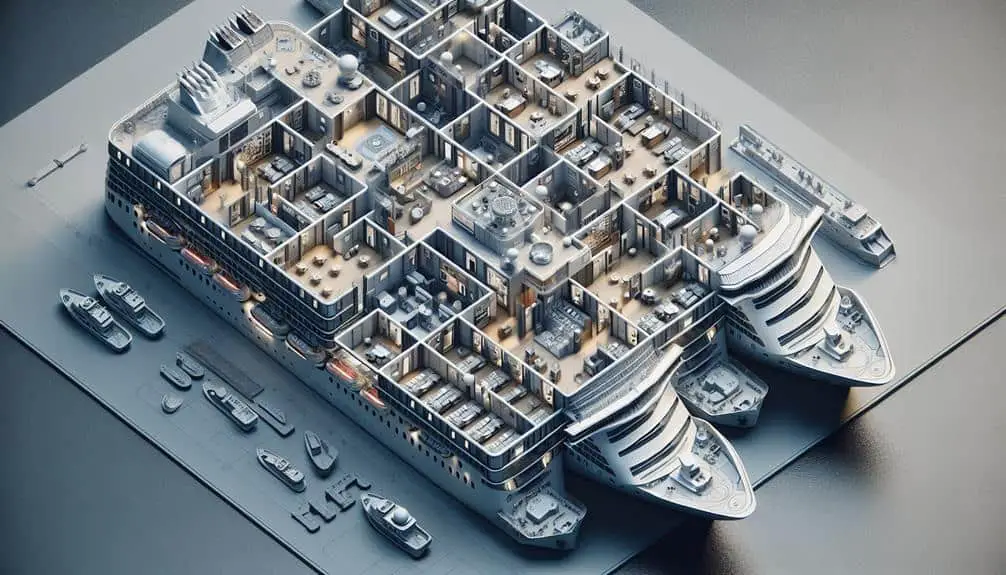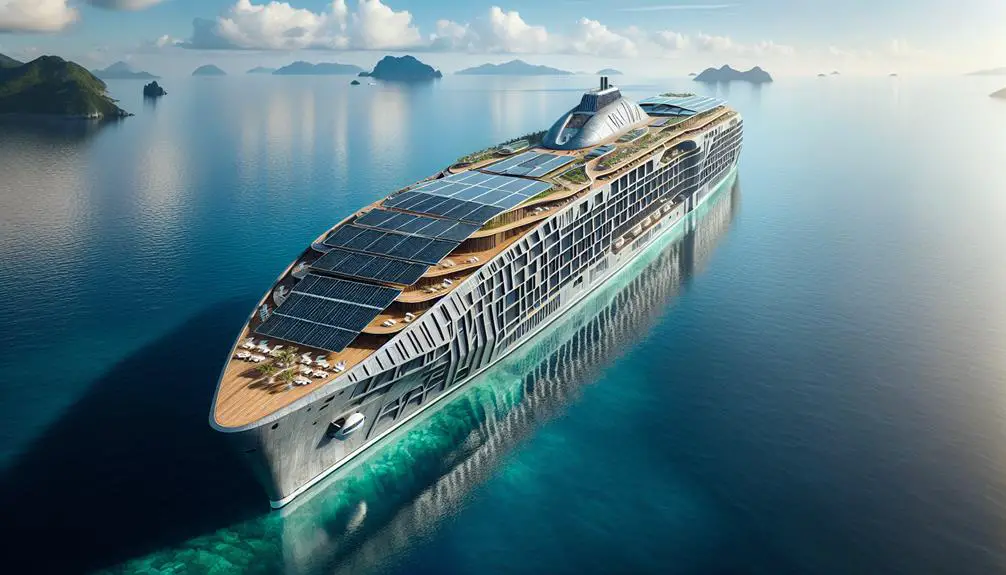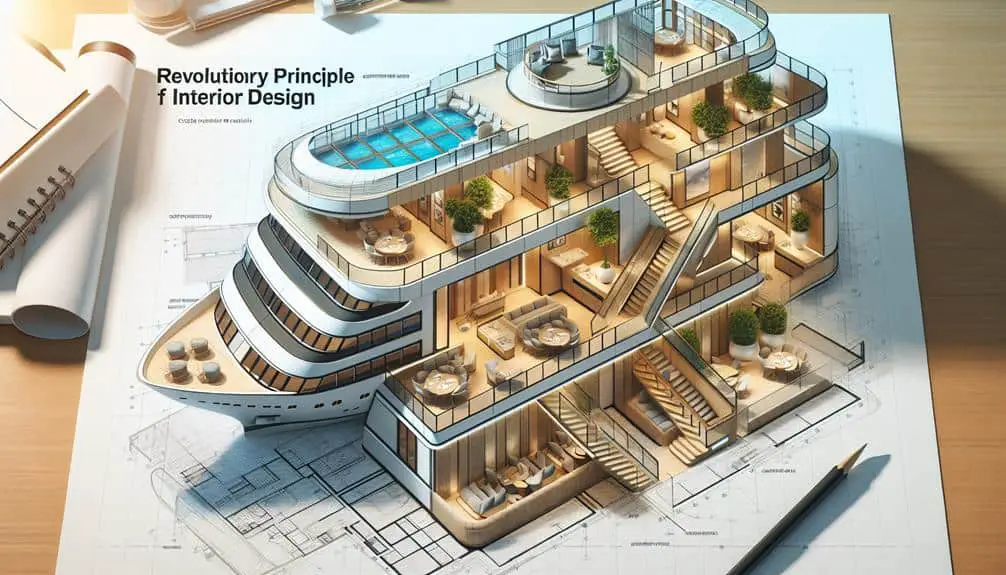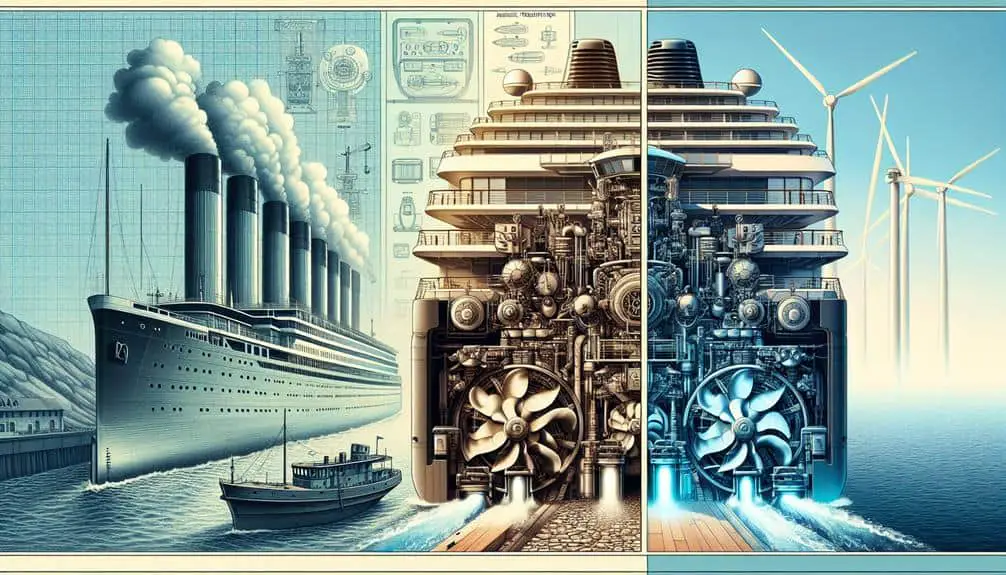Experience heightened efficiency in construction, adaptable layouts for passenger needs, and simplified maintenance with modular design on cruise ships. Optimize material usage, decrease waste, and streamline manufacturing processes. Customizable layouts cater to different passenger preferences swiftly. Easily access components for maintenance without extensive reengineering. The design guarantees quick repairs, reducing downtime and enhancing passenger safety. Find out how these benefits redefine cruise ship capabilities.
Key Points
- Enhanced efficiency through optimized material usage and streamlined construction processes.
- Improved flexibility allows for customizable layouts and quick reconfiguration to adapt to changing trends.
- Facilitates easier maintenance and upgrades by providing easy access to components and systems.
- Reduces downtime with quick repairs, ensuring prompt service and enhancing passenger safety.
- Enhances space utilization and customer satisfaction through modular design adjustments.
Increased Efficiency in Construction Process
By implementing modular design in cruise ships, you can greatly enhance the efficiency of the construction process. This approach allows for reduced waste by optimizing material usage and minimizing excess resources. Through the use of standardized modules, the manufacturing process becomes more streamlined, ensuring that each component fits seamlessly into place.
Reduced waste is achieved by precisely calculating the necessary materials for each module, eliminating the need for excess cutting or molding. This not only saves resources but also minimizes costs associated with material disposal. Additionally, with a streamlined workflow, tasks can be allocated more efficiently, reducing the time required for construction.
The modular design permits a structured approach to building the ship, where each section can be assembled independently before being integrated into the larger vessel. This compartmentalized construction method enhances quality control and allows for easier troubleshooting if issues arise. By reducing waste and implementing a streamlined workflow, modular design significantly enhances the efficiency of the construction process in cruise ships.
Enhanced Flexibility and Adaptability
Improving the flexibility and adaptability of cruise ships is essential for meeting diverse travel demands and maximizing operational efficiency. Modular design allows for improved space utilization by offering customizable layouts tailored to different needs. By incorporating modular components, cruise ships can quickly adjust cabins, entertainment areas, dining spaces, and other facilities to cater to specific passenger requirements. This adaptability not only enhances the overall passenger experience but also enables cruise lines to efficiently utilize their vessel's space, ensuring that every area serves a purpose.
Moreover, customizable layouts facilitate better use of available space, allowing cruise ships to adapt to changing trends or requirements without major structural modifications. This flexibility enables operators to reconfigure sections of the ship swiftly, whether to accommodate new amenities, optimize traffic flow, or create themed areas. The ability to easily modify the ship's layout enhances its appeal to passengers seeking unique experiences, ultimately contributing to increased customer satisfaction and loyalty.
Facilitates Easier Maintenance and Upgrades
Facilitating easier maintenance and upgrades is a primary benefit of incorporating modular design in cruise ships, streamlining operational processes and guaranteeing efficient vessel management. The modular approach allows for components to be easily accessed and replaced, reducing downtime for maintenance activities. This quick access to modules means that repairs can be completed faster, getting the ship back into service promptly.
Moreover, the modular design facilitates upgrades to various systems on the cruise ship. For instance, if there's a need to enhance the entertainment systems or improve the HVAC system, modular components can be swapped out or upgraded without extensive reengineering. This flexibility not only saves time but also contributes to cost savings by minimizing labor and resource requirements.
From a safety perspective, the ease of maintenance and upgrades provided by modular design guarantees that critical systems can be promptly serviced, reducing the risk of malfunctions or failures that could compromise passenger safety. By enabling efficient maintenance and seamless upgrades, modular design enhances both the operational efficiency and safety of cruise ships.
Frequently Asked Questions
How Does Modular Design in Cruise Ships Impact the Overall Passenger Experience and Comfort Onboard?
In shaping passenger comfort on cruise ships, modular design is pivotal. The design flexibility allows for tailored spaces that enhance your journey. Your experience is elevated through efficient layouts and rapid construction, ensuring peak satisfaction.
Are There Specific Environmental Benefits Associated With Using Modular Design in Cruise Ship Construction?
When considering the environmental impact of modular design in cruise ships, you'll discover significant sustainability benefits. The construction process reduces waste, energy consumption, and emissions, aligning with green practices and promoting a more eco-friendly maritime industry.
How Does Modular Design Affect the Overall Cost of Building and Operating a Cruise Ship?
When considering cost efficiency, modular design can have a substantial impact on the overall expenses of building and operating a cruise ship. The construction timeline is typically shorter with modular construction methods, reducing labor costs by up to 20%.
Can Modular Design Be Applied to Existing Cruise Ships for Retrofitting Purposes?
When considering retrofitting challenges on existing cruise ships, modular design offers a systematic approach for integration. Future applications may involve enhanced flexibility in adapting new technologies and amenities without significant reconstruction, thereby optimizing operational efficiency.
What Technological Advancements Have Enabled the Implementation of Modular Design in Cruise Ship Construction?
Technological advancements in construction technology have revolutionized the use of modular components in cruise ship building. These innovations streamline assembly, improve efficiency, and allow for greater customization, enhancing the overall design and functionality.




